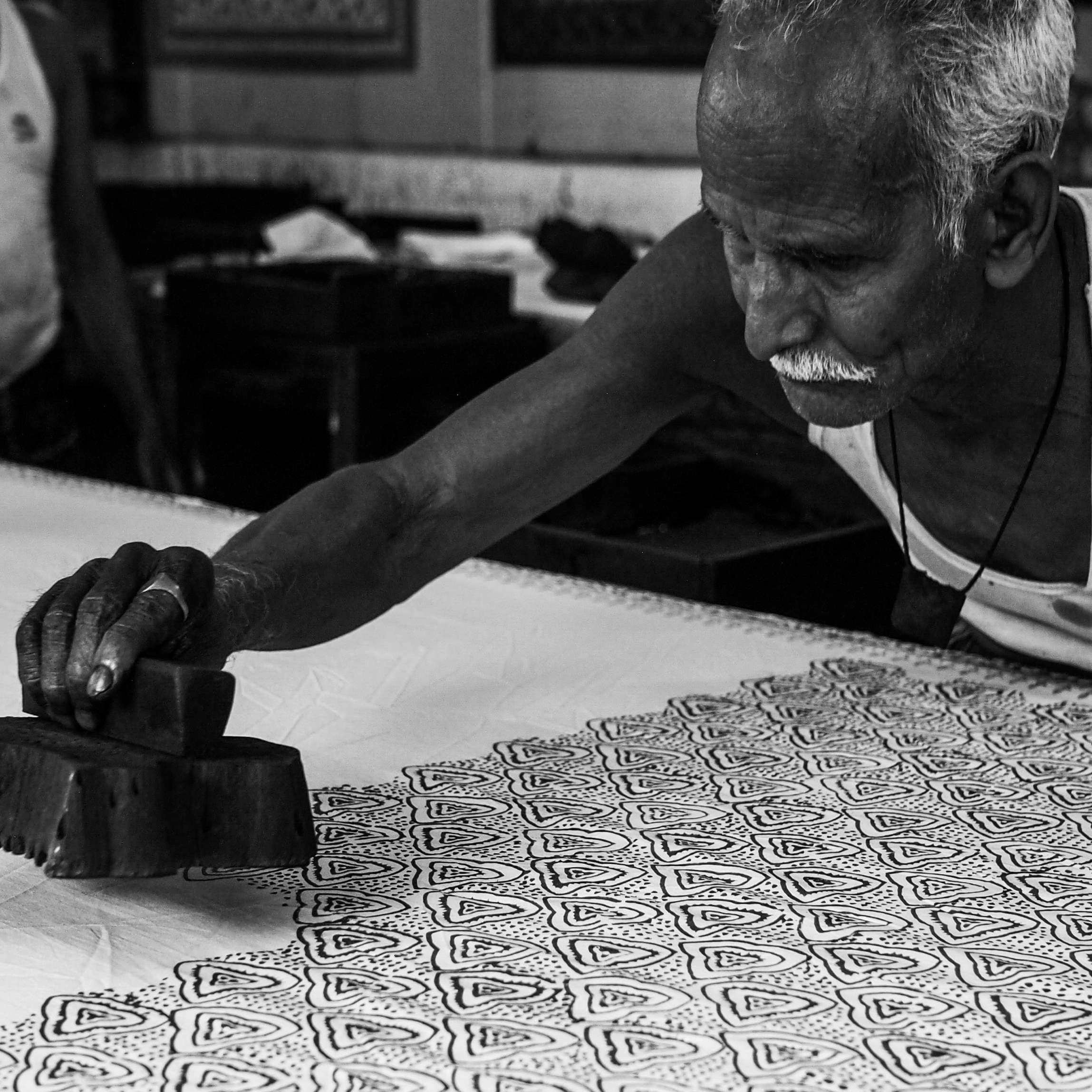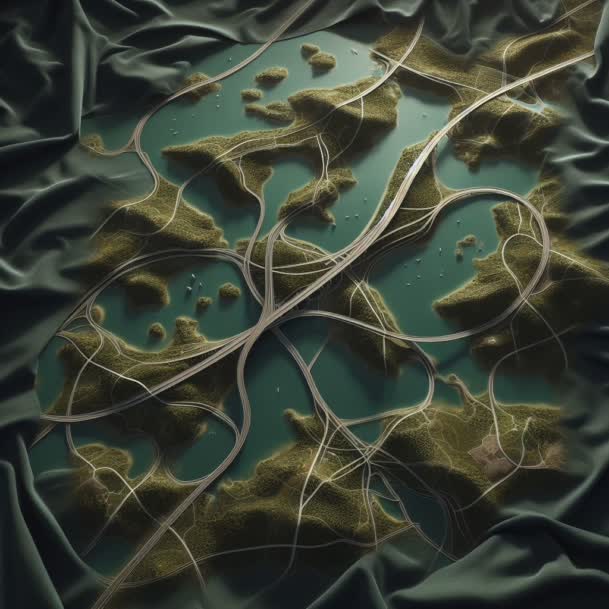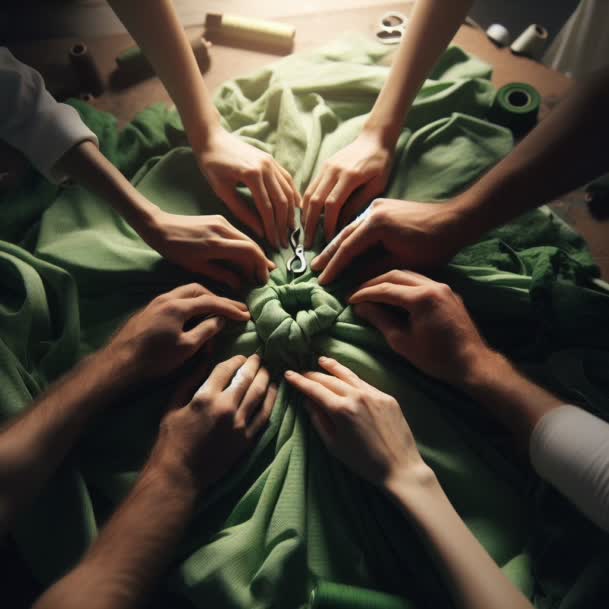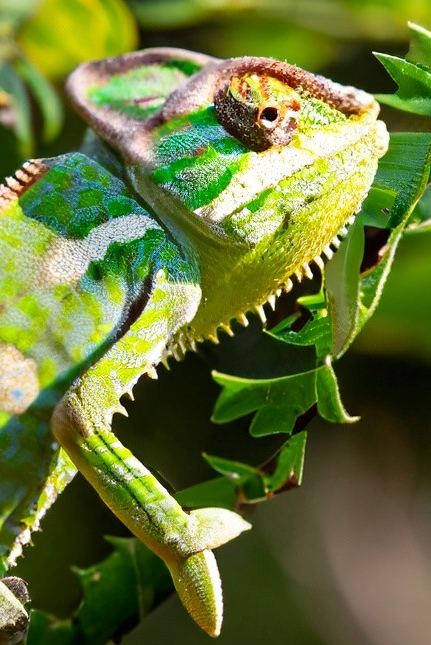Science is not only a disciple of reason but, also, one of romance and passion.
by Stephen Hawking
How Lamberti accelerated the pace of the transition with a special binder for pigmented inks
Reading time: 10 min
Science is not only a disciple of reason but, also, one of romance and passion.
by Stephen Hawking

Digital printing techniques have transformed the industry offering remarkable economic and environmental benefits.
The inkjet textile printing has experienced significant growth in the last two decades and continues to do so, especially with regards to dyestuff-based inks.
Despite this overall growth, adoption of inkjet printing with pigments remains limited. What are the main causes of this stunted growth? Are there specific psychological and/or technical barriers? What are the 'desired outcomes' of potential users, and the differences between dyes and pigments applications?
The aim of our white paper is threefold: reconstructing the 5000-old story of the evolution of textile printing, understanding the transition from conventional to digital printing, and, lastly, higlighting benefit and limitations of pigment printing.
A specific focus is placed on the role played by Lamberti as the textile industry embraces digital transformation.
In the 2000s initial unreliable inks and inadequate ingredients brought to printheads clogging and a lack of trust in emerging digital techniques. The first attempts on digital machines were also too slow compared to conventional printing speed, especially for roll-to-roll applications. This technological gap has been fully overcome with the current printheads and printers, like showcased at the last ITMA technological exhibition in Milan in June 2023.
From an initial excess of optimism, leading to disproportionate expectations, now professionals have understood the benefits and limitations of digital printing.
A growing consumer awareness of environmental costs and implications is supporting the pigment switch also in the inkjet roll-to-roll space. While the numerous opportunities to differentiate printing works keeps on increasing the appeal of inkjet, and the growth of competition is lowering prices, we still observe that investments are limited due to global uncertainty.
In a nutshell, all digital technologies - inkjet or laser - reduce the amount of materials needed and the overall preparation time, from the setting step to the actual printing step. The following table allows to summarise the many key advantages of inkjet textile printing compared to conventional analog printing method.
| Analog | Digital | |
|---|---|---|
|
Non-contact printing The printhead doesn't touch the surface at all. It allows to print also on breakable substrates and 3D objects. |
X | V |
|
Cost of screen (engraving) Digital printing doesn’t need any screen because the designs to be printed are represented as a digital file. |
X | V |
|
Sample cost reduction Conventional printing needs at least 10 m of fabric to produce a sample. Digital printing requires less than 1m. |
X | V |
|
Flexibility of sampling (time saving) By digital printing it is possible for example to print ten different design, 1 mt each, by only programming the printer. |
X | V |
|
Long run production Until the breakeven point is reached, digital printing can be much less expensive per meter of printed fabric. |
V | X |
|
Water consumption Digital printing is more water-efficient: there are no screens... so no need to wash screens at the end of printing process. |
X | V |
|
Mass customization & Personalization Digital printing opens new markets, such as personalizing a product with the local retailer’s name, printing promotional items, or in local languages on low volume product labels. |
X | V |

Digital textile printing ecosystem relies on the successful collaboration between machines manufacturers and inks producers, fostering innovation and reliability.
It is worth considering that inks must not only provide high quality of the printed textile material, but they may also be responsible for troubles affecting the printing machines. This technical aspect is especially true when it comes to pigment-based inks that consist of small insoluble colour particles dispersed in a carrier, thanks to engineered dispersing agents.
Inkjet printing is a sensible technology demanding for specifically designed ingredients avoiding the nozzles clogging of expensive industrial printheads. This is the main reason why, in the last decade, the textile printing machines manufacturers and inks producers worldwide naturally established partnerships and collaboration programs to the point of having created a proper ecosystem over time.

Lamberti has been collaborating for 10 years with pigment-based inkjet ink producers, developing different solutions among ink ingredients portfolio and especially creating and improving its chemicals through accurate R&D pathways, in close collaboration and testing iteration with partners, to reach the applicative targets.
This relationship has been and still is the successful tool to grow knowledge and experience in formulating increasingly more performing inks.
This is especially true for Esajet 200, the topic of our case study, developed thanks to the straight collaboration with an inkjet inks manufacturer in 2014, and bringing together the scientific knowledge of the Synthetic Polymers laboratory and the Textile Applications Laboratory, a segment of the latter eventually evolving into the Digital Inks Ingredients Laboratory.
Real-life demo of the extended open time of an Esajet 200-containing ink on JetXpert print station equipped with Kyocera KJ4B printhead
Textile Design - The complete guide to printed textiles for apparel and home furnishing, Carol Joyce (1993)
The Textile Printing, Reggiani Macchine (1995)
Industrial Inkjet for Dummies, XAAR Special edition (2010)
Handbook of Industrial Inkjet Printing, W. Zapka (2018)

